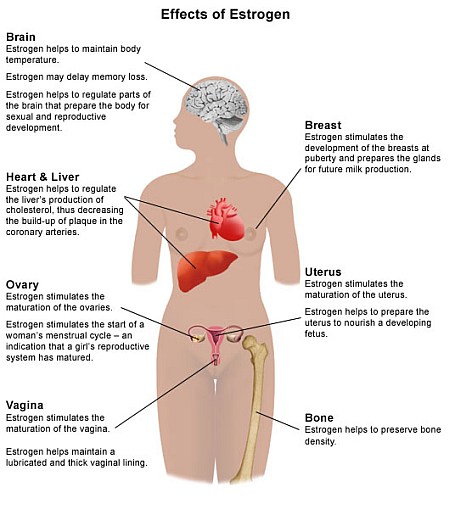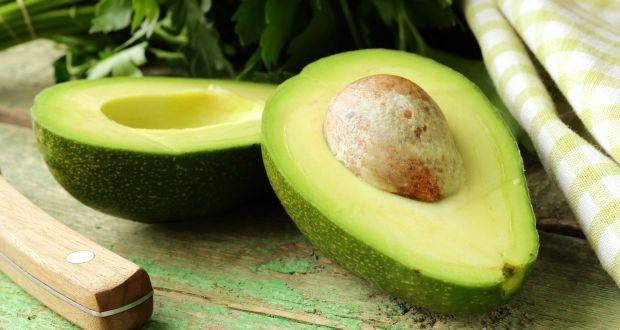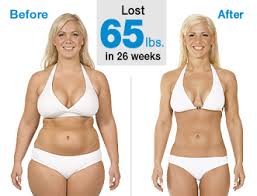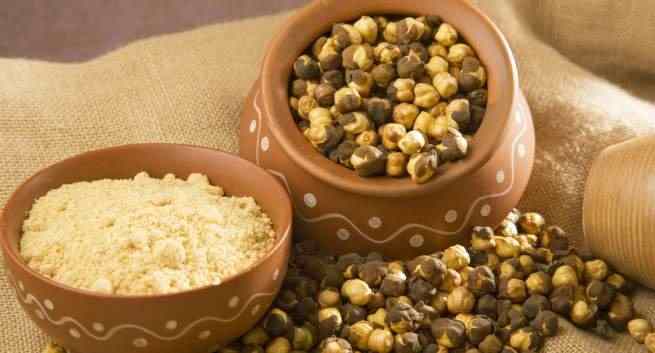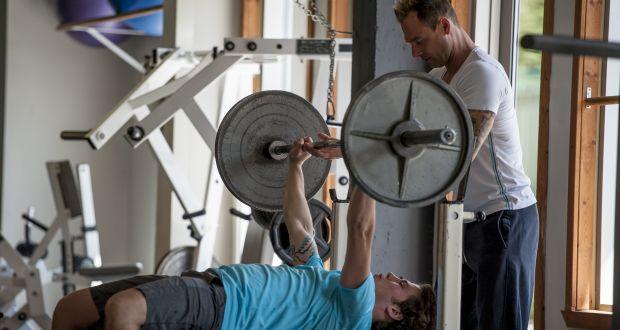How to Burn Fat Without Losing Muscle
When you're trying to lose weight and excess fat, it's natural to lose a little muscle mass.[1] However, it's not healthy or ideal to lose large amounts of muscle mass. To prevent this, there are certain diet plans, foods and types of exercise that can help you lose weight, burn fat and maintain your muscle mass. Carefully planning on what foods you should be eating and how much can help you lose fat safely and in a healthful manner.
Steps
-
1
Aim to lose one to two pounds per week. Safe weight loss is considered losing about one to two pounds per week.[2] Losing weight faster increases your risk for muscle mass loss.[3]
- It's generally recommended to never consume less than 1200 calories daily. Calories that are too low for your age, gender or activity level put you at risk for muscle mass loss as you're not consuming adequate nutrients for your body to function normally.[4]
- Losing one to two pounds per week results from cutting out about 500 calories daily. Do not cut out more than this.
-
2
Eat adequate protein. When you cut out calories, you limit how much protein you can consume throughout the day. Not being able to eat adequate protein may also result in muscle mass loss.[5]
- At a minimum, women need 46 g of protein daily and men need 56 g of protein daily. This is easily met when you consume a source of protein at every meal and snack. Do not consume less than this amount.[6]
- Stick to high quality sources of protein such as lean red meat, poultry, seafood, beans, lentils, tofu, nuts or natural nut butter, eggs and low fat dairy.
- One serving of protein is about 3-4 ounces or a cut of meat that's about the size of your palm or a deck of cards.
-
3
Fill up on fruits and vegetables. Both of these food groups are fairly low in calories but high in nutrients and can provide extra bulk to your diet. This can help make a lower calorie meal plan more filling and satisfying.[7][8]
- It's recommended to consume two to three servings of fruit daily and four to six servings of vegetables daily. To meet these recommendations, you'll most likely need to consume a fruit or vegetable at each meal.
- One small fruit or 1/2 cup counts as one serving of fruit and one cup or two cups of leafy greens counts as one serving of vegetables.[9][10].
-
4
Consume two to three servings of carbohydrates daily. Following a lower carb diet can help you lose weight more quickly and lose more fat compared to low-fat diets or only low calorie diets.[11]
- A low carb diet focuses on limiting how many carbohydrates you eat within a day. Depending on your diet, it could range from 60–200 g of carbohydrate daily. The fewer amount of carbs you allow in your diet, the more restrictive your food choices will be.
- Carbohydrates are found in many food groups including: grains, fruits, starchy vegetables, dairy and legumes. Consume just one to three servings of these daily to support weight loss. Read packages or use a food journal to find out how many carbs are in the foods you're eating.
- A low-carb diet with higher protein has shown the best potential for fat loss and maintaining muscle mass.[12]
- Talk to your doctor prior to starting a low carb diet. While safe for the general healthy adult, following a low-carb diet might not be appropriate for everyone.
-
5
Consider protein supplements. Protein supplements are drinks that are moderately low in calories and high in protein. Getting another 15–30 g of protein daily from these drinks may help you meet your minimum protein intake, increase weight loss and prevent loss of muscle mass.[13]
- Whey protein is a high quality protein for your body. It has all the essential amino acids your body needs and cannot make itself. If purchasing a protein supplement, try to purchase whey protein if possible.
- If you have a whey allergy, or do not want to use whey, consider using another source of protein. Egg and soy protein are appropriate alternatives.
- Protein supplements have been shown to be especially effective at maintaining and even building lean muscle mass when they are consumed after a workout.[14]
- If choosing to use a protein supplement to help increase weight loss, make sure to pick a supplement that's not overly high in calories. Also don't mix a lot of ingredients or high calorie ingredients that increase your supplement's total calorie level. This may cause weight gain if it adds too many calories to your diet.
- You can purchase protein supplements at a variety of stores. Look for them at a well-stocked grocery store, some pharmacies, health food stores, sports/nutrition stores or online.
Maintaining Muscle Mass with Exercise
-
1
Do cardio exercise three to five times per week. One key part of fat loss is exercise. Cardiovascular (cardio) or aerobic exercise helps your body burn calories and can support your weight loss.[15]
- Maintaining the body’s lean muscle mass and burning calories can be accomplished by performing cardio exercise regularly.
- Aim for about 150 minutes of cardio each week. Ideally, the exercise performed should be at moderate intensity. This is any activity that raises your heart rate and breathing to a level where it's still comfortable for you to say short sentences without stopping for a breath.[16]
- Different types of aerobic activity can include: walking/running, biking, using the elliptical, swimming or dancing.
- Interval training is a combination of strength training and cardio in short bursts of higher intensity exercises and moderate intensity exercises. You can do this type of activity for shorter amounts of time. Studies show that this type of activity helps support fat loss.[17]
-
2
Perform weight training two to three times per week. A crucial part to fat loss and muscle mass maintenance is strength training.[18] Consistent weight training helps prevent muscle mass loss and can increase the amount of lean muscle mass.[19]
- Strength training should be done for about 20–30 minutes per session.[20] Try to work every major muscle group during each training. Make sure to work: core (back, abs and glutes), chest, arms and legs.
- Strength training activities include: weight lifting, isometric exercises and classes like yoga or pilates.
- If you're just starting out with weights or strength training, start with low weights and a few repetitions. Do not start out with overly heavy weights or train for long periods of time - this could cause injury.
- Limit your training frequency for each muscle group to every other day at a maximum. Each specific muscle group should only be directly stimulated one to two times per week in order to allow for full recovery time.[21]
-
3
Include enough rest days. Taking a day or two off within the week will help your body recover and continue to maintain and build lean muscle mass. It's important to take off between both cardio and strength training throughout the week.
- Allow for about 24–48 hours of time off between strength training sessions.[22]
- When you take a "rest day" you should still be active. Rest days should not include a lot of sitting or laying down. You should perform very light intensity activity and restorative activity. You can do: walking, a leisurely bike ride, or restorative yoga.
-
4
Focus on proper fueling and recovery. When you're dieting, working out and aiming to maintain or build muscle mass, it's important to focus on proper nutrition immediately before and after a workout.[23]
- Prior to a workout, it's ideal to consume a lot of hydrating fluids and also a small carbohydrate-rich meal.[24] This should be eaten at least 30 minutes prior to your workout to make sure you don't have any GI upset during your exercise program.
- Pre-work out snacks include: small bowl of oatmeal, small piece of fruit, individual yogurt or a serving of whole wheat crackers.
- Immediately after a workout, it's also important to continue drinking hydrating fluids. In addition, you should consume a small meal or snack that contains protein and carbohydrate. This combination in particular helps muscles recover.[25] Try to eat within 60 minutes of completing your workout.
- Post-work out snacks include: hummus and whole grain pita chips, small apple and peanut butter, chocolate milk, trail mix with dried fruit and nuts, or a fruit smoothie with added protein powder.
-
Feel Overweight? Lighten Up Your Life With These Tips!
TIP! Who’s coming to dinner tonight? Studies have shown t
-
8 Things That Happen When You Stop Drinking Alcohol
Maybe your nightly glass of vino has turned into two or three. Or you&
-
Guaranteed Weight Loss
Guaranteed weight loss is a goal that millions of people in the devel
-
Weight loss tips for men
Ask a man over 18 years if he is following a diet. Three out of
-
Two Big Weight Loss Mistakes
There are some loss mistakes which, if you don’t rectify,
-
Bust Those Weight Loss Excuses Away!
Most of the people who are on a diet find some excuses so that they c
- DON'T MISS
- Increase Your Weight Loss Potential With This Comprehensive Plan
- Shrinking those fat cells Part 1
- 7 Best Free Weight Loss Tips And Tricks
- Weight Loss Tip #40 – ‘Soup’erb way to lose weight!
- Ten Weight Loss Tips To Follow
- Fun With Food
- 15 Foods Nutritionists Eat Every Day
- Rapid Weight Loss
- You Can Lose Weight! Just Follow These Tips
- Low Calorie Diet Plans that May Work For You
